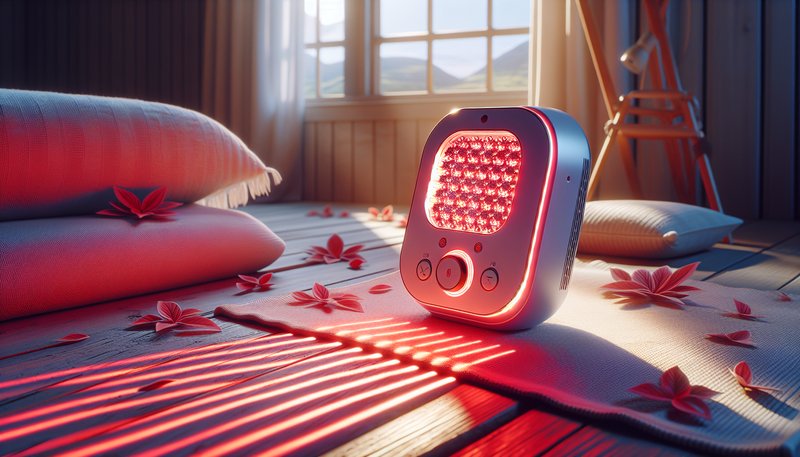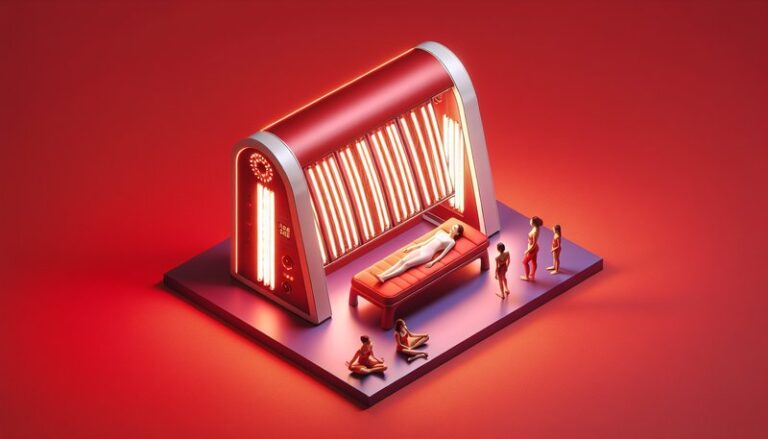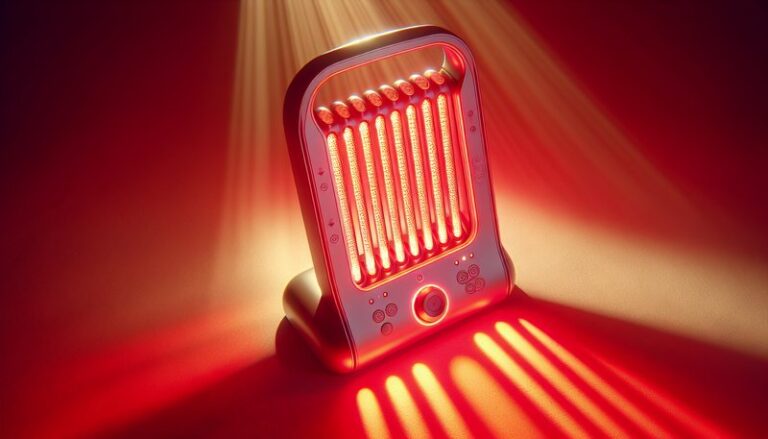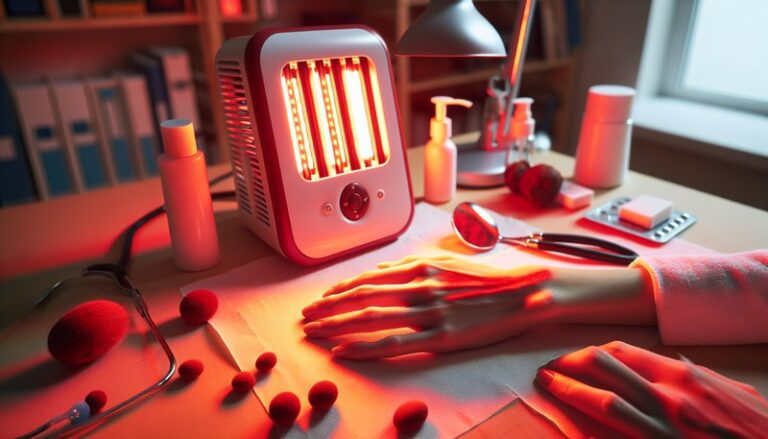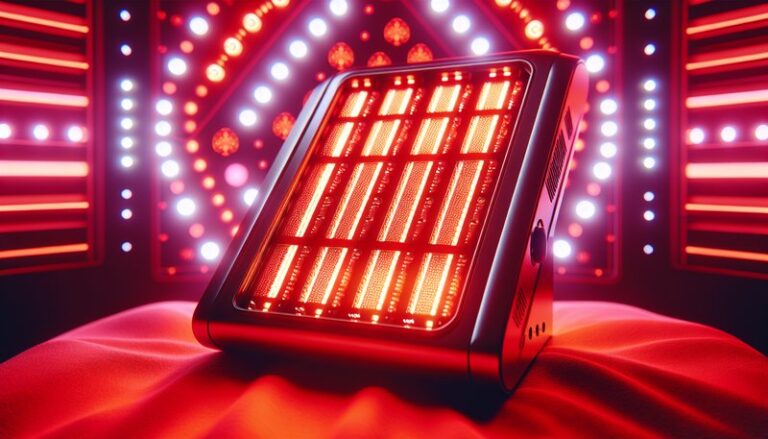How Red Light Therapy Works?
Have you ever wondered about the glowing promise of red light therapy and its potential benefits? As interest in alternative treatment options grows, so does the curiosity surrounding this light-based therapy.
This article will explore how red light therapy works, its mechanisms, benefits, considerations, and alternatives. By demystifying this topic, we aim to provide a comprehensive understanding of red light therapy and its applications.
Key Takeaways
- Red light therapy utilizes specific wavelengths of light to stimulate cellular functions and promote healing.
- It offers numerous benefits, including reduced inflammation, enhanced skin health, and improved recovery from injuries.
- Considerations such as treatment duration, safety, and individual health conditions are important before starting therapy.
What is Red Light Therapy?
Red light therapy, also known as low-level laser therapy (LLLT) or photobiomodulation, is a non-invasive treatment that uses specific wavelengths of light, typically in the red and near-infrared spectrum, to stimulate physiological processes at the cellular level.
This therapy operates on the principle that light can be absorbed by cells, particularly mitochondria—the powerhouse of the cell. The absorbed light energy leads to increased ATP (adenosine triphosphate) production, stimulating various cellular functions that enhance healing and regeneration.
Red light therapy has applications in skin care, pain management, wound healing, and even hair restoration, contributing to its rising popularity.
What are the Benefits of Red Light Therapy?
Red light therapy boasts a wide range of benefits, making it an attractive option for those seeking natural therapies. Here, we explore some of the key advantages.
Enhanced Skin Health
One of the most notable benefits of red light therapy is its ability to improve skin health. It can stimulate collagen production, reduce the appearance of wrinkles, improve skin tone, and accelerate the healing of blemishes or scars. Many users report a more youthful complexion after consistent treatment.
Reduction of Inflammation and Pain Relief
Red light therapy has been shown to reduce inflammation and offer pain relief for various conditions, including arthritis and muscle soreness. Studies indicate that it promotes blood flow to affected areas, enhancing recovery and providing analgesic effects.
Improved Healing and Recovery
Athletes and active individuals often turn to red light therapy for its recovery benefits. By promoting faster healing of muscle strains and injuries, it can reduce downtime and improve overall performance. Clinical studies found that recovery times decreased by significant margins when red light therapy was integrated into rehabilitation protocols.
Enhanced Mood and Well-being
Emerging research suggests that red light therapy may positively impact mood and sleep quality. The therapy can influence circadian rhythms and may be used as a complementary approach to managing seasonal affective disorder (SAD) and sleep disturbances.
Get the lowdown on Does Red Light Therapy Help Wrinkles?
Is it Possible to Use Red Light Therapy at Home?
Yes, it is entirely feasible to use red light therapy at home. Various devices, including handheld gadgets and larger panels, are available for consumer use.
For the full details, see Red Light Therapy Results Timeframe
What are the Advantages of Home Use?
Convenience is a significant benefit of home red light therapy. You can incorporate it into your daily routine without needing appointments at a clinic. Furthermore, at-home devices can be more cost-effective than ongoing professional treatments.
What are the Disadvantages of Home Use?
Despite the advantages, there are challenges associated with home use. The effectiveness of at-home devices can vary widely, and improper usage might lead to suboptimal results. Additionally, individuals may miss out on professional oversight, which can help tailor treatments more specifically.
What are the Things to Consider Before Using Red Light Therapy at Home?
Before embarking on a red light therapy regimen at home, several considerations should be addressed to ensure a safe and effective experience.
Understanding the Technology
Familiarizing yourself with the specific device you intend to use is crucial. Different devices may emit varying wavelengths and intensities of light, affecting their efficacy. Research different options and choose one backed by credible reviews.
Duration and Frequency of Treatments
Establishing an appropriate treatment schedule is vital. Overexposure can lead to diminished results or potential adverse effects. Most recommendations suggest sessions lasting 10 to 30 minutes, several times a week, but each individual’s needs may vary.
Consulting a Healthcare Professional
Before starting any new therapy, especially for specific health conditions, consult with a healthcare provider. This ensures the therapy aligns well with your health status and needs.
What are the Alternatives to Red Light Therapy?
For those evaluating their treatment options, several alternatives to red light therapy may also promote healing and wellness.
Cold Laser Therapy
Cold laser therapy, akin to red light therapy, uses low-level lasers to reduce pain and inflammation. It functions on similar principles, targeting affected tissues to stimulate healing.
Photodynamic Therapy
Primarily used in dermatology, photodynamic therapy involves the application of light to activate a photosensitizing agent. This method is effective for treating specific skin conditions and pre-cancerous lesions.
Topical Treatments
Creams and ointments, particularly those infused with anti-inflammatory or collagen-boosting ingredients, serve as alternatives. While they may not penetrate as deeply as light therapy, they can still promote local healing.
Conclusion: Is it Recommended to Use Red Light Therapy?
Red light therapy presents numerous benefits, from improved skin health to enhanced recovery and pain relief. However, its effectiveness can vary based on individual needs, device quality, and treatment consistency.
A thorough understanding of the therapy, along with professional guidance and appropriate device selection, can lead to a rewarding experience. Given its versatility and growing body of research supporting its efficacy, red light therapy is generally recommended for those seeking alternative healing modalities.
Frequently Asked Questions
Is red light therapy safe for everyone?
Red light therapy is generally considered safe for most individuals. However, those with specific conditions or sensitivities should consult their healthcare provider before starting treatment.
How long does it take to see results from red light therapy?
Results often vary based on the condition being treated and individual responses, but many people report visible improvements within a few weeks of consistent use.
Can red light therapy be combined with other treatments?
Yes, red light therapy can often be used alongside other treatments, such as physical therapy, skin treatments, or pain management strategies, to enhance overall efficacy.
What should I look for when purchasing a red light therapy device?
When selecting a device, consider factors such as the wavelength of light, intensity, size, and user reviews. Devices rated for safety and effectiveness are preferred.
How often should I use a red light therapy device?
Typically, sessions can range from 10 to 30 minutes several times a week, but individual needs may vary. It’s essential to follow device instructions and consult any specific recommendations based on your health condition.
